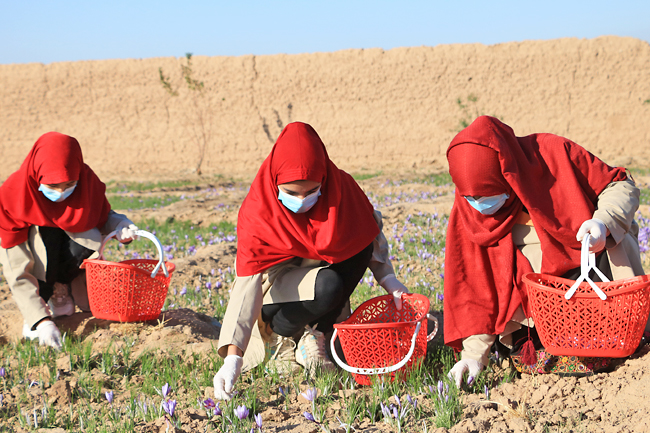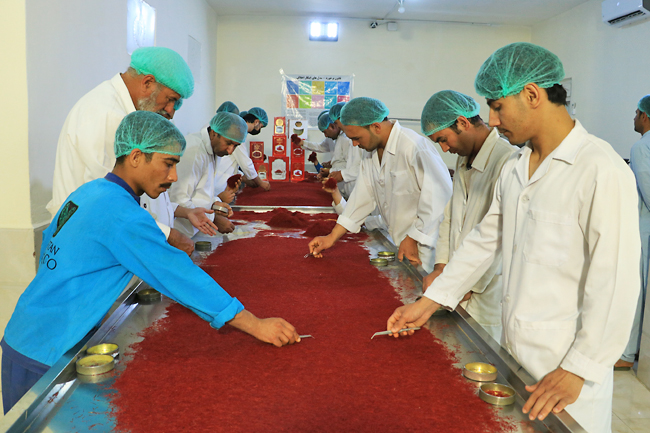HERAT (XINHUA) – On a dusty saffron farm in Afghanistan’s western Herat province, Nafisa, a 55-year-old woman, carefully gathers saffron flowers.
For her, this seasonal work provides a vital lifeline. “I earn between AFN150 (USD2.20) and AFN180 (USD2.64) daily from working on the saffron farm. It helps me cover my basic needs and sustain my daily life,” she said.
“I have no other way to earn a living. I wait for the saffron harvest season every year to collect these flowers,” she said.
Saffron cultivation has been steadily expanding in the war-torn country over the past two decades. More farmers are turning to this precious crop, drawn by its profitability.
Currently, around 9,000 hectares of land are dedicated to saffron cultivation in Afghanistan, with approximately 95 per cent concentrated in Herat province, according to Chairman of Tulai Surkh Afghan (Afghan Red Gold) Abdul Shakor Ehrari, a leading saffron processing company. According to the official, Saffron cultivation in Afghanistan, especially in the Herat province, continues to grow as farmers aim to harvest more and earn better incomes.
“Based on the reports we have received from partner bodies, some 8,000 to 9,000 hectares of lands have been cultivated saffron in Afghanistan with 85 to 95 per cent of them only in Herat,” Ehrari told Xinhua in his saffron farms recently.
According to Ehrari, the saffron harvest season provides employment for between 500,000 and one million workers across the country. He predicts a significant increase in this year’s yield, estimating a harvest of up to 40 tonnes of saffron compared to last year’s 35 tonnes.
For workers like 39-year-old Hatam, the harvest season offers a source of stability. “I collect about 12 kilogrammes of saffron flowers each day. Life goes on. I work here and am satisfied with the outcome of my efforts,” Hatam told Xinhua on the saffron farm in Herat recently. Despite the hardships, the growing saffron cultivation continues to offer hope and opportunities in Afghanistan, contributing to both individual livelihoods and the national economy.






